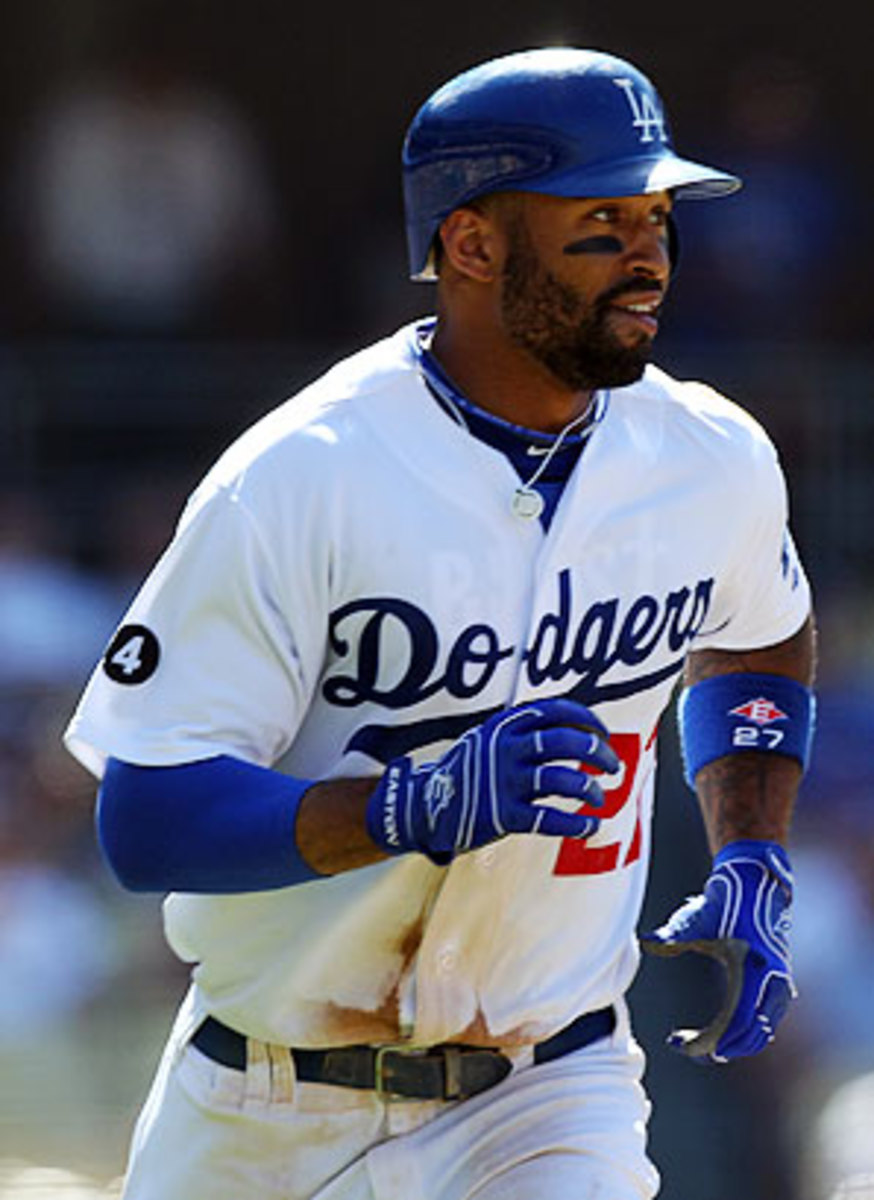Numbers reflect Kemp's maturation
"You don't know what you started. I just came here to party."
Matt Kemp could be quoting his ex, pop star Rihanna, every time he steps on the field these days. The 26-year-old Dodgers centerfielder has taken a huge step forward this season, leveraging his enormous natural talent to produce an MVP-caliber performance just one year after the most difficult season of his career.
Since reaching the majors at 21, Kemp has displayed as broad a tool kit as any player in the game. He stole more than 30 bases twice, hit at least 25 homers twice and peaked with a .342 batting average back in 2007. At times he was a complete player, wreaking havoc on the base paths and taking runs off the board in center. At 24 in 2009, Kemp won a Gold Glove Award, the Silver Slugger, and finished 10th in the NL MVP voting for a Dodger team that won its second straight NL West crown. As impressive as that performance was, Kemp was still a raw player getting it done with tools, rather than developing skills that would enable him to get the most from his talent.
Kemp went backwards, along with the rest of the Dodger franchise, in 2010. Taken to task early in the season for his work ethic by GM Ned Colletti, Kemp never got back on track, posting his worst full season. His defensive performance, as measured by advanced metrics, was terrible -- Kemp was one of the worst center fielders in baseball -- and he lost ground in his plate discipline with a career-high 170 strikeouts. A high-percentage basestealer (85/24 SB/CS) to that point, he had a miserable year, stealing 19 bases in 34 attempts. As is often the case, Kemp, the Dodgers' best player, was blamed for the team's off year, getting no credit for playing in every single game or posting career highs in walks and homers.
Everything Matt Kemp is doing this season -- hitting for average, hitting for power, running the bases, making plays in center field -- he's done in previous seasons. What he's done this year is put them all together while blending experience with his raw talent. The most obvious change is on the bases, where Kemp has heeded the tutoring of new coach Davey Lopes to become an efficient machine. Under Lopes, who coached some of the greatest basestealing teams in baseball history in Philadelphia, Kemp is 27-for-30 stealing. Kemp has also become a better baserunner when the ball is in play. In the season's first week, Kemp went first-to-third on a groundout by teammate Marcus Thames, and while he's rarely made such dramatic moves, the gained base represented an applied aggressiveness, a mix of speed and calculation, that has shown up in his game throughout 2011. He ranks in the top 20 in MLB, per Baseball Prospectus, in runs generated by his legs.
Kemp is performing better in every facet of the game. His defense has bounced back from the last 2010 campaign to once again be good, if not quite the level he played at at his 2007-08 peak. He's driving the ball more, with a career-high flyball rate and career-low groundball rate, and his physical strength is in evidence by his 24 homers on a career-best 22.4 percent HR/FB rate. That figure, about 50 percent higher than his career mark coming into the year, is a mix of skill and luck -- Kemp is hitting the ball harder and longer, and getting a break on the outcomes. After a 2010 season in which he posted a career-low batting average on balls in play, .295, Kemp's BABIP has returned to its established levels, .350.
REITER:Kemp's play shines through in lost season for Dodgers
Most impressively, Kemp is set to blow past his career highs for walks drawn and on-base percentage. Some of that is a spike in intentional passes -- Kemp has 12, after drawing just 17 in his first five seasons -- but it's also a clear improvement in his approach. Through 2010, Kemp drew unintentional passes in 6.5 percent of his plate appearances, and walked just one for every 3.7 times he struck out. Those are poor numbers, but they won't run you out of the league for them. In 2011, Kemp hasn't channeled Adam Dunn, but he's been more patient: unintentional walks in 9 percent of PAs and a 2.5 K/UIBB ratio. Those numbers approach the league average, and for a player as talented as Kemp, they bleed into everything he does. Kemp gets himself into better counts, where he can do more damage. The walks enable him to put his speed into play on the bases. Everything about his game is better for making a relatively small improvement in his plate discipline.
The struggle for Kemp -- and we've seen a little bit of this in July -- will be to keep the gains he's made for a team that offers little in the way of threats once you get past his lineup spot. Kemp and Andre Ethier are the Dodgers' offense, and Kemp has, at times, gotten into old habits. He had a 28/7 K/UIBB ratio back in May before pulling it together in June, and so far in July he's at 14/3. It's no surprise, then, that May and July have been his worst months. The lessons of last year -- Kemp was one of the best players on the Dodgers, yet took much of the blame for their lost season -- no doubt left scars, but in baseball, one player can only do so much. Kemp can help the Dodgers most by sticking to the game plan he came into the season with, having good at-bats, making good decisions on the bases, applying his speed in the outfield. Getting out of that mode and trying to effort a bad team into contention would be a mistake.






